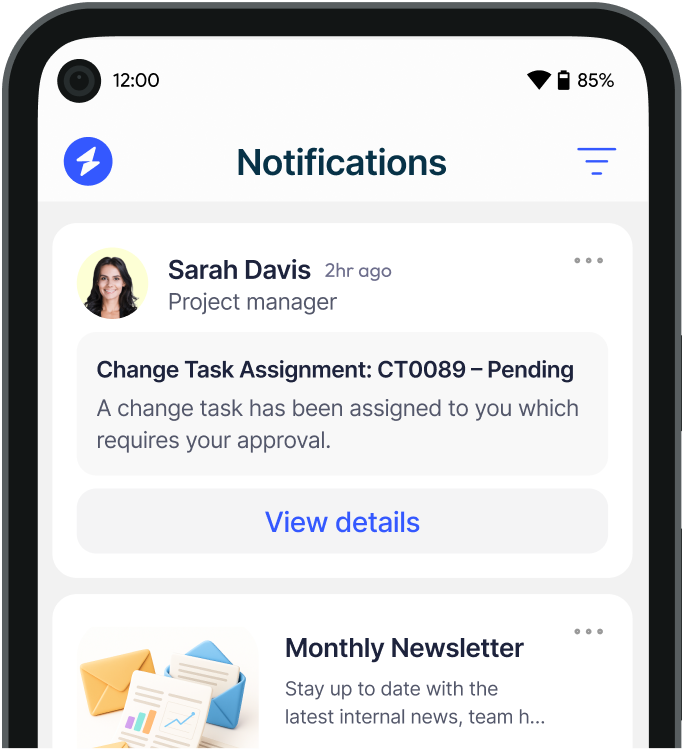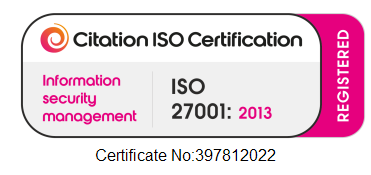
Cybercriminals don’t break in through the front door — they send an email. Phishing remains one of the simplest yet most effective cyber threats, tricking employees into clicking malicious links, opening fake invoices, or handing over login credentials.
The stakes couldn’t be higher. A single successful phishing attempt can expose customer data, trigger a compliance breach, or lock down entire systems with ransomware. The problem is that phishing tactics evolve constantly. What worked as training six months ago rarely stops today’s scams.
That’s why phishing awareness alerts have become an essential tool for enterprise security. They provide real-time notifications that cut through the noise and help employees spot and respond to threats before damage is done.
At a Glance
Table of Contents

Why phishing training alone isn’t enough
Annual phishing training has long been the standard, but in practice it doesn’t always work. Staff often forget what they learned within weeks. Attackers constantly reinvent their tactics, sending emails that look more convincing every day. And when a phishing campaign hits, there’s no guarantee that training from months ago will kick in before someone clicks.
Think about the average employee’s inbox. It’s full of newsletters, system updates, and meeting invites. A cleverly disguised phishing email blends right in, especially when staff are under pressure. Without an immediate alert explaining “don’t click that subject line” or “beware of emails from this sender,” mistakes are inevitable.
That’s the gap phishing awareness alerts fill: real-time, in-the-moment intervention.
Phishing alerts in action across industries
In financial services, phishing scams often impersonate executives requesting urgent wire transfers. With an alert system in place, staff get a clear on-screen message: “Emails requesting urgent payments from leadership are fraudulent. Report immediately.” Managers can see acknowledgements roll in, ensuring compliance.
In healthcare, phishing attempts frequently arrive disguised as medical software updates. A timely mobile notification can warn frontline staff: “Ignore emails requesting you to download the ‘PharmaUpdate.zip’ file. IT will issue official updates.” This prevents malware from infecting critical systems.
In government agencies, ransomware campaigns can spread rapidly. A targeted alert might instruct employees to disconnect devices from the network, while audit logs provide evidence to regulators that action was taken.
Even in construction or manufacturing, phishing is a risk. Site staff using shared terminals can be warned via digital signage: “Suspicious login attempt detected — do not enter your details on external sites.”
These real-world scenarios show how phishing alerts translate training into immediate action.
The compliance advantage of phishing alerts
For many organisations, especially in regulated sectors, phishing is more than an IT issue – it’s a compliance challenge. Regulations like GDPR, HIPAA, and PCI-DSS require evidence that organisations have taken steps to protect data and inform staff.
Phishing alert software provides that assurance by generating time-stamped audit logs. Every alert, every acknowledgement, and every escalation is recorded. This gives compliance teams the proof they need to demonstrate due diligence and reassure regulators, insurers, and stakeholders.
Best practices for phishing awareness alerts
The most effective phishing alerts are short, clear, and actionable. Instead of jargon, they use plain language: “Do not click the email titled ‘Payroll Update’ — it is a phishing attempt.”
Smart organisations also use alerts proactively. That means running phishing simulations to test employee readiness, sending regular reminders about new tactics, and tailoring messages to specific teams or locations.
The key is balance: alerts should be clear and attention-grabbing without being overwhelming. Used well, they reinforce training, build a culture of security, and create a workforce that’s alert but not alarmed.
Why choose Heed for your phishing awareness alerts
Heed is built for enterprises that can’t afford mistakes. Its phishing awareness alerts reach employees instantly across desktop, mobile, SMS, voice, and digital signage, making sure no warning gets lost in the inbox.
Every alert includes acknowledgement tracking and audit-ready reporting, giving IT and compliance leaders full visibility into who has seen and acted. Heed also integrates with your existing security tools, so phishing alerts can be triggered automatically when threats are detected.
By combining real-time alerts, surveys, approvals, and compliance workflows in one platform, Heed ensures cybersecurity communication is consistent, fast, and reliable.

.svg)




.svg)
.svg)
.svg)